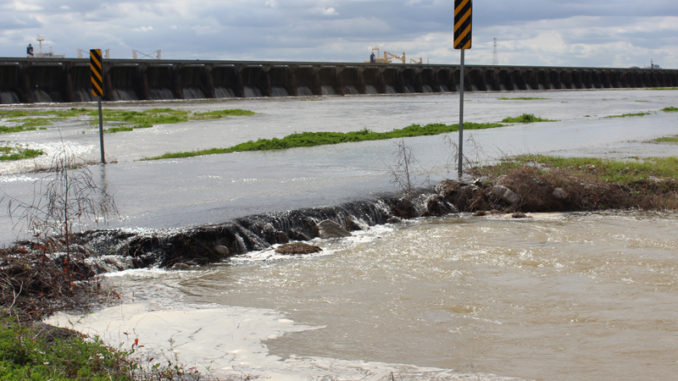
Making history with a second opening in the same year, the U.S. Army Corps of Engineers will reopen the Bonnet Carre’ Spillway as early as 1 p.m. today (May 10) in Norco.
On May 9, the Corps recommended operating the spillway with a tentative date of May 14. But the date was advanced when regional rainfall caused the Mississippi River to rise 6 inches in the past 24 hours with more rain expected through the weekend.
These rains could elevate the river above 17 feet with a peak as high as 17.5 feet at the Carrollton Gage.
“In an abundance of caution, the operation date is being moved forward to ensure the safe passage of this high water by limiting the elevations downriver of the spillway,” according to a Corps of Engineers statement.
Operation of the structure will relieve pressure on main levees, maintain river stages and regulate the flow downriver from the spillway at 16302 River Road in Norco.
The decision to open the spillway was issued by Maj. Gen. Richard G. Kaiser, commander of the Mississippi Valley Division in Vicksburg, Miss. This will be the 14th operation of the structure since 1937 and the first time it has been opened twice during the same high water event.
Drones, and other unmanned aerial systems, are not permitted for flight during the opening.
Environmental, hydrologic, structural and navigational considerations all bear on the decision to open the spillway, according to the Corps of Engineers. Other factors that affect the decision are the overall condition of the levees and the ability of the river to pass flows, and the effects high water and river currents may have on vessels navigating the river. The Corps has a detailed environmental monitoring plan in place that will assess water quality, dissolved oxygen, sedimentation, recreation, and natural resources such as the pallid sturgeon, both within the spillway as well as Lake Pontchartrain.
The structure has a design capacity of 250,000 cfs, the equivalent of roughly 1,870,000 gallons per second. When needles are removed, river water flows into the floodway and is conveyed nearly six miles between guide levees to the lake. Operation of the structure is relatively simple. Two cranes, moving on tracks atop the structure, lift timbers from their vertical position in the weir and set them horizontally across the top of the structure to allow river water into the spillway.




Be the first to comment